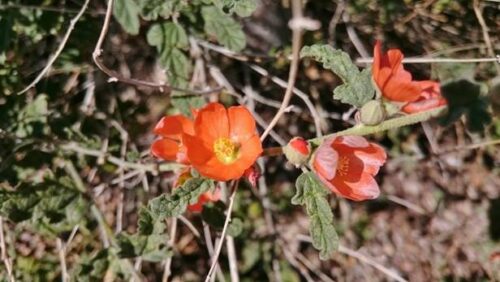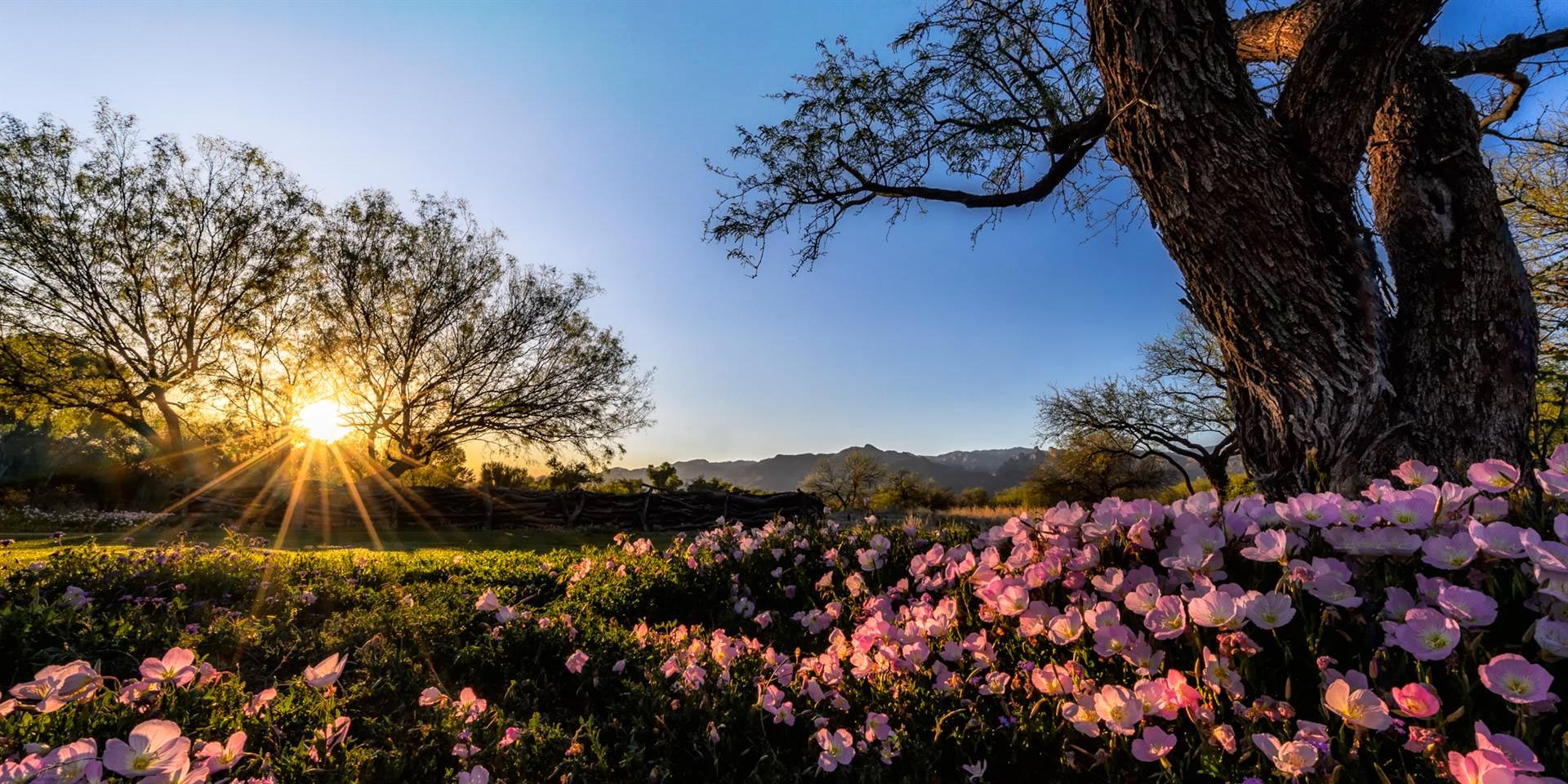Plant Profile: Desert Globemallow
Posted Jan 17, 2021
A Most Remarkable Native Plant
By Kathleen M. McCoy, Master Naturalist, AZNPS Phoenix Chapter Member
What plant with stunning petals could you see growing in an alley, a xeriscape garden, and the Sonoran Desert? Most likely the correct guess is Sphaeralcea ambigua, more commonly known as desert globemallow or apricot mallow.
The genus Sphaeralcea (globemallows) contains about 50 plants primarily in North America, and most have flowers in the orange to red range. The most drought tolerant member is the desert globemallow. This largest-flowered globemallow blooms most heavily in the spring, but continues to flower through November. Each bowl-shaped flower has five petals that are up to 1.5 inches long. Once the flowers have faded, small green cups will form, sometimes containing hundreds of seeds. This low-maintenance plant will re-seed itself and can provide surprises in color production; the seed you plant one year may produce plants with a different color the next.

Desert globemallow in bloom. Photo credit: Lisa Rivera
This perennial subshrub’s foliage is a characteristic silvery color with tiny star-shaped wooly hairs, two adaptations that conserve moisture and reflect sunlight. With slightly woody stems restricted primarily to the crown, each desert globemallow grows in a large, rounded clump to a height of 20-40 inches, and may have over a hundred stems growing from the same root. Transplanting globemallows may be difficult and disappointing. The plant above ground may have lateral roots that extend three feet below the ground. If the root is not completely intact when digging up or putting the plant back into the earth, the plant may be mortally wounded.
Desert globemallows can be found in parts of AZ, CA, NM, NV, and UT, as well as Sonora and Baja California in Mexico. You will most likely find this plant growing in desert scrub below 3500 feet on dry, rocky slopes, edges of sandy washes, roadsides, and disturbed areas. It requires full sun and well-drained soil.
This drought-adapted plant can be used in range revegetation. Desert globemallow is an early colonizing species and may suppress invasive species in areas affected by fires. Seeds can be used on construction sites for erosion control or to restore the native plant community. Seedlings have been used to revegetate abandoned mine sites.
Although desert globemallow is edible, it unfortunately does not have a taste to match the brilliance of its flowers. However, it is a food source for the desert tortoise and provides browse for bighorn sheep and livestock. In addition, the large number of flowers produced throughout the year provides a steady source of pollen and nectar to many pollinators, such as hummingbirds, native bees, honeybees, butterflies, and moths.
The hardy desert globemallow has a prominent history in the Southwest. Its stems were used by the Yavapai to create trays for drying saguaro fruit or slabs of pounded mescal. Our ancestors also discovered that desert globemallow relieved and/or cured many disorders. Native Americans have used its leaves and roots to make medicine and eyewashes. Due to its high mucilage content, the plant has been used orally for coughs, colds, diarrhea, and the flu. As a poultice, globemallow has been applied to cuts, burns, snake bites, and swellings like rheumatism.
This lovely native plant is neither threatened nor endangered. The only “problem” is that once established, they and their abundant progeny may aggressively take residence in spaces reserved for other plants in the garden. Most desert globemallows spread by rhizomes. If you plan to contain them, be prepared to pull up lots of suckers. The desert is another matter; stand back and watch the plant spread its glowing blossoms as far as the eye can see.
Sources:
Lady Bird Johnson Wildflower Center. Plant Data Base: Sphaeralcea ambigua. https://www.wildflower.org/plants/result.php?id_plant=spam2
SEINnet. Sphaeralcea ambigua. https://swbiodiversity.org/seinet/taxa/index.php?tid=3800&taxauthid=1&clid=0
Water Use It Wisely. Plant of the Month: Globe Mallow. https://wateruseitwisely.com/plant-of-the-month-globe-mallow/

